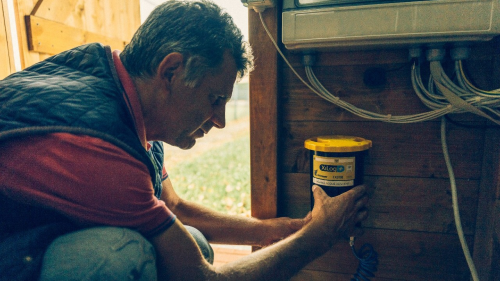
With a total network of supply pipes covering 10.3 km, the Montodine water supply system serves 6,580 inhabitants and includes the nearby towns of Credera, Moscazzano, Ripalta Arpina and Ripalta Guerina. Approximately 275,000 kWh of energy is used to distribute roughly 670,000 m3 of water annually.
The system draws water from two wells. It has a purification plant with filters at a rated pressure of 180 m3/h, two reinforced concrete storage tanks with a capacity of 240 m3 each, and two Grundfos booster sets controlled by Hydro MPC units with an external frequency converter for each pump.
Improving efficiency
Padania Acque Gestione S.p.A. is the water supply company responsible for the Montodine water supply system. The company is a joint stock company wholly owned by the town councils in the province of Cremona and the Cremona provincial government. It supplies 330,000 residents in 111 towns with 30 million m3 of water a year.
“Padania Acque Gestione is constantly seeking to improve efficiency and this is also achieved with the use of Grundfos pumps,” says Sergio Vicari, System Designer at Padania Acque Gestione. “Most of the 300 surface pumps are vertical Grundfos CR pumps of varying power levels. They are controlled by Grundfos units equipped with external frequency converters. They have kept pace with technological developments over the years, ranging from the initial Hydro 2000 units to the current Hydro MPC units.”
The main issue with the water supply system was related to the supply pressure. One of the towns recently connected to the system, Ripalta Guerina, presented Padania Acque Gestione with a problem. Parts of the town's pipe network were of a smaller cross-section, and this meant that it was not possible to reduce the pressure in the pipes in proportion to the flow supplied – an operation that is usually performed with the Hydro MPC units.
The result was less overall system efficiency and the objective of Padania Acque Gestione was to overcome this and increase system efficiency.
Pressure transducers
Following extensive consultation, Grundfos engineers found a solution using the Grundfos Demand Driven Distribution controller.
Using pressure transducers known as XiLog units at the ends of the water distribution network, pressure values are measured and sent to the Demand Driven Distribution controller via a GSM network. The controller ensures optimum pressure, and by gradually ramping-up and ramping-down pressure avoids sudden momentum changes in the pipes, reducing water hammer and thereby water loss.
Sergio Vicari explains the solution as follows: “The XiLog unit was fitted to an end section on the Ripalta Guerina water network, whereas at Montodine the Demand Driven Distribution controller was installed on the existing Hydro MPC unit that controls four CR64-3-1 15 kW pumps. We arrived at this solution, because Grundfos took the time to present to us the benefits of the Demand Driven Distribution controller and showed how it can increase system efficiency.”
The result
After about three months of experimentation, the results are very encouraging, and Padania Acque Gestione is very satisfied. In order to ensure the optimum pressure on the load placed on the terminals, the starting pressure – which previously had to be maintained at about 6.0 bars – was reduced automatically by the system to the current average values of about 4.2 bars, with peaks up to 5.3 bars. The pressure recorded on the terminal by the XiLog unit has remained steady at around 3.0 bars, without any limitation of service to users. In parallel, the overall efficiency of the system has increased from about 0.4 kWh per m3 to the current 0.34 kWh per m3.
The controller reduced the overall pressure from 6 to 3.0-4.2 bars.
Thanks to the newly installed controller, the estimated annual savings are projected to be approximately 47,000 kWh, which equates to a savings of about EUR 7,500/year – or 17% per year.
Based on an initial evaluation carried out on the minimum night flow rates, Grundfos estimates a reduction in real losses of about 25,000 m3/year, which in terms of the total losses of the distribution system result in a reduction of approximately 30%.
Padania aims to further reduce the pressure on the terminal to 2.5 bars through the future installation of a second XiLog unit in another part of the distribution network.
After three months of testing, Padania Acque Gestione has reduced the overall pressure in the system without any detrimental effect to users. The overall efficiency of the system has increased, with annual savings projected to be about 47,000 kWh, or 17% lower. Grundfos also estimates 30% reductions in the grid's annual water loss.




